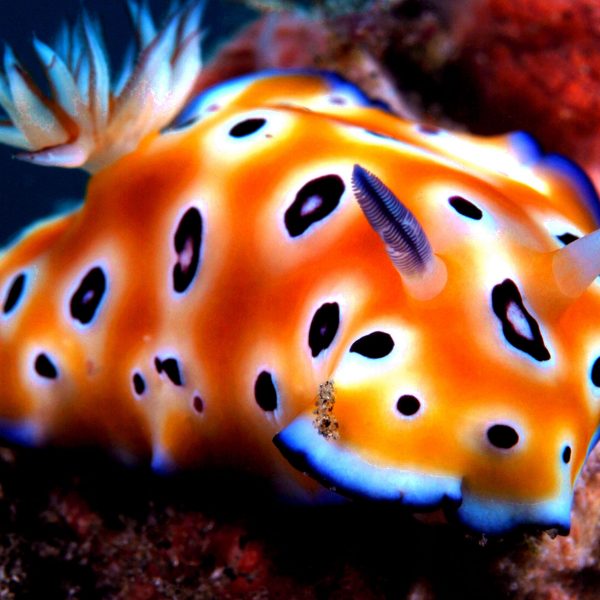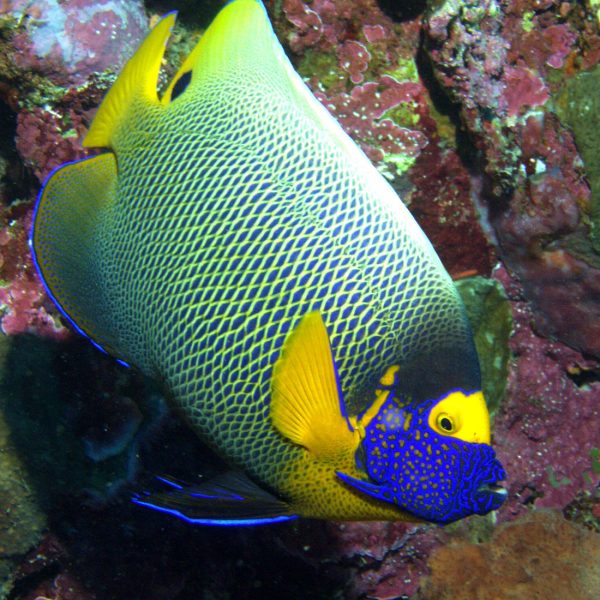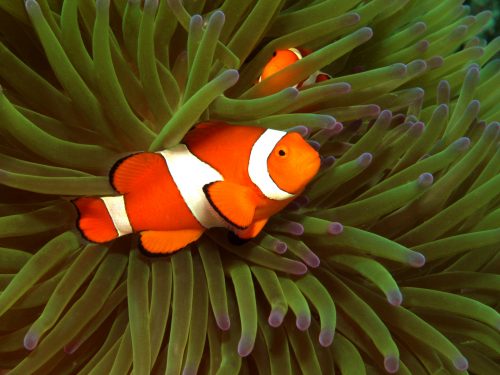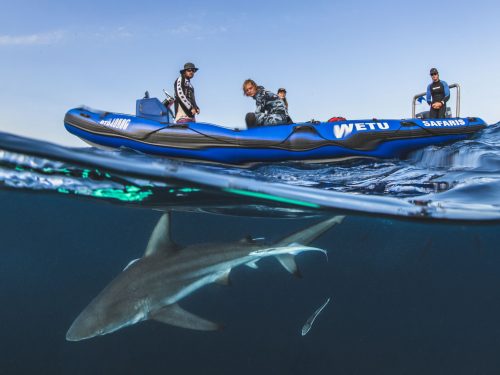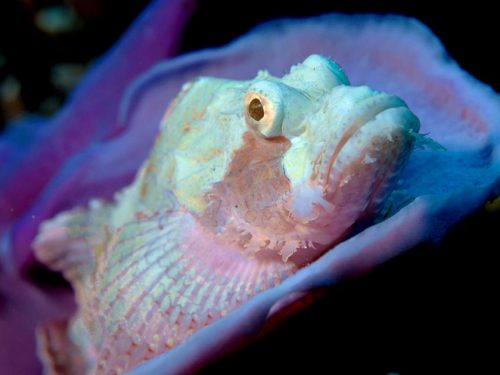Dive Trip Quick Facts
Bali: Experience the Best on a Dive Safari
Location: Indonesia (Bali & Lombok)
Best Time of Year: March - November
Trip Length: 13 days/12 nights; fixed dates
Required Experience: Novice to Professional
Price: Please inquire
Trip Highlights
Incredible diversity of dives including muck, walls, wrecks, reefs, pelagics and macro, USAT Liberty Wreck, Mola Mola (within season), incredible macro and wide angle photography opportunities.
More Details
Sample Itinerary
Days 1-4: Menjangan Island
Starting your Bali Dive Safari at Menjangan Island (part of West Bali National Park) enables you to experience the island’s first internationally-known dive location. Looking back to the mainland during the half-hour local wooden outrigger boat journey, you can see exactly how mountainous Bali actually is – something not visible from south Bali’s more densely populated areas. Menjangan Island is famous for its coral walls and easy conditions, warm waters and great visibility that can reach 50m+. Due to the white sand and good visibility, there is usually a lot of sunlight to bring out the bright colours of the schooling fish surrounding you. The walls are covered with a multitude of gorgonian fans, soft corals and sponges. Frequently seen are batfish and big-eyed trevally, as well as turtles and barracudas. There are only occasional sightings of large pelagic fish as the island is protected from the cold currents coming in from the open sea.
Day 05: Puri Jati
For those who’ve wondered but have yet to try it, and those who adore – today you will dive Bali’s muck-diving hotspot! Visibility is 5-25m, and the water is warm. A wide, gentle brown sand slope with patches of seagrass and tufts of lavender soft corals hides many juvenile batfish and lionfish, rare fish, crustaceans, as well as cephalopods (including Wonderpus, Blue-ring and Mimic octopus). Other fascinating sand dwellers to see include Mantis shrimps, Fingered dragonets, various ghostpipefish, seahorses, seamoths, demonstingers, Cockatoo flounders, Veiled melibe nudibranchs, soft coral cowries, stargazers, the list goes on…
If conditions are unfavourable for Puri Jati, you will dive at Secret Bay, Bali’s first and so best-known muck location. The only bay off the narrow Bali Strait (where currents can reach 7 knots), this unique site acts as a large catch-tank for many larval and juvenile fish, and rare marine species. Only 2km wide, and 3-12m deep you’ll find the water is cold, and the fish are fat and healthy! Unusual nudibranchs, Banggai cardinalfish, gobies, Ambon scorpionfish, filefish, puffers, dragonets, pipefish, juvenile Batavia batfish, Mimic octopus, Hippocampus kuda and many other organisms abound. Elsewhere juveniles hide to avoid predators, but here in Gilimanuk there are very few large fish, so juveniles have no need to hide. The bottom is fine sand with patches of algae and seagrass, some branches, coconuts (housing for octopodes!), etc.
Days 06-07: Tulamben Bay
The small village of Tulamben is where you are most likely to meet internationally recognized underwater photographers. Being on Bali’s northeast coast, the bay receives very plankton-rich waters from the major ocean current that moves from the Pacific to the Indian Ocean. This, coupled with the fact that the three main dive sites provide totally different physical environments, means Tulamben is a must visit for divers. This area is world-famous for the 120m USAT Liberty shipwreck (possibly the world’s easiest wreck dive) and The Drop-off/Wall, which is an old lava flow from Mount Agung, at the opposite end of the bay from the wreck (about a 10 minute walk between the two sites). Tulamben Bay offers incredible shore-diving with very easy conditions – perfect for divers and snorkelers of all levels. You will see just about everything in any Indo-Pacific Reef Guide book when you dive in Tulamben Bay. The resident marine life includes a huge school of Big-eyed trevallys, Leaf scorpionfish, Bumphead parrotfish, Pygmy seahorses, minute anglerfish, neon nudibranches, ghost pipefish, and shrimp and goby sets. You can also see garden eels and amazing multi-colored clouds of anthias as well as damsels and schools of sweetlips, batfish, fusiliers and butterflyfish. The variety is amazing. The beach is fist-sized black volcanic rocks that become sand in the shallows which, along with the plankton in the water, accounts for the relatively low visibility (12-25m). The black sand brings out the colors of the corals, gorgonians, fish and other marine life – great for underwater photography. As Tulamben Bay provides shore-diving and rarely has currents, more dives are offered per day than at other sites on this safari.
Day 08: Amed
The quiet fishing village of Amed (more accurately: Jemeluk Bay) is 30mins drive south of Tulamben Bay. The beaches are sand, the water temperature can be affected by thermoclines, and visibility is usually 14-22M. Amed Reef (12-22m) offers many different kinds of sponges and gorgonians, and marine life that includes everything from White-tip reef sharks, Napoleon wrasses, occasional big trevallys, butterflyfish, fusiliers and triggerfish to gobies and shrimp pairs. Be on the look out for anemones with attendant clownfish, schools of barracuda and Blue-spotted rays. Three kilometers south-east of Amed, the quiet little bay of Lipah is home to the wreck of a 20m steel freighter. The wreck lies at 6-12m, between a reef and the sand bottom, and is encrusted with sponges, gorgonians and coral bushes. The sloping reef is lovely, particularly in the bottom (15-20M) section, featuring soft corals, gorgonians and sponges. The shallowest section contains Table and Staghorn corals and is home to damsels and anthias.
Day 09: Nusa Penida including Manta Point
Nusa Penida is the largest of three islands lying off Bali’s east coast. Due to ocean currents, the water here is fairly cold but often startlingly clear, with gorgeous corals and prolific marine life including sharks, occasional turtles, and in mid-July to November each year, Mola-Mola (the weird and wonderful Ocean sunfish). AquaMarine offers nine dive sites at Nusa Penida, the majority of which are drift dives.
Sental, Ped & SD: These three sites encompass the coral reef that runs the length of Nusa Penida’s north coast and offer great drift diving. Toyapakeh is Nusa Penida’s most popular dive site as it is partially protected from currents and has good visibility with rich coral. Diving Crystal Bay, just off Ceningan Channel, provides a good chance to see Mola-Mola, when in season. You can also see White-tip reef sharks, Eagle rays, and Leopard sharks if you are lucky. Manta Point is on southwest Nusa Penida where the coastline features dramatic limestone cliffs that descend straight into the ocean. Although it can be prone to surge, there is rarely a current. In addition to a high-90-something percent chance of seeing Manta rays, you may see other pelagics such as tuna and Tiger mackerel.
Amuk Bay on the south side of Bali’s eastern point, with Padangbai to the south and Candidasa to the north, is 6km across. Just outside Padangbai is Blue Lagoon, a treasure trove of marine life. Tepekong and Mimpang are islands outside the bay. Biaha is a little to the north, and Gili Selang is off Bali’s eastern tip. All offer some of Bali’s most breath-taking diving but, due to sometimes unpredictable conditions, with the exception of Blue Lagoon, these sites need to be treated with respect. Biaha is the favourite dive site of Annabel Thomas, founder and owner of AquaMarine Diving. Mimpang, Tepekong and Biaha are all surrounded by remarkably healthy reefs, but they are generally low-lying due to the current that sweeps the east coast of Bali bringing nutrients to these reefs and accounting for the diversity of their marine life. You will find a vast number and great diversity of fish, occasional sharks and frequent pelagic visitors set against a dramatic backdrop of craggy black walls with beautiful, healthy corals and often superb visibility. The water can be cold, although it is precisely this that makes these sites what they are. Approximately 100km south of Bali, extremely cold water wells up from a deep basin to replace the water taken away by currents to the west of Bali. This upwelling brings with it some of the marine life for which this area is famous.
Day 10: Gili Biaha
AquaMarine is one of only a few companies to offer dive trips to this small crescent-shaped island. Some of Bali’s most stunning diving features vast numbers of fish, occasional sharks, and frequent pelagic visitors, set against chiselled black walls with beautiful, healthy corals and superb visibility. There is a beautiful and healthy reef around the island, a rocky slope on the north side and a rugged black wall around the southern part. This rugged black wall, with the breaking waves above, is absolutely beautiful in places and at times, it is almost as if the amount of fish is excessive – but not quite!
Divers can expect to see anything from Mola-Mola to nudibranchs! The inside area of the crescent has a cave large enough for six divers, in which White-tip reef sharks often sleep. The protected area outside the cave has interesting corals with many shrimp and crabs, and is home to anglerfish, leaf scorpion fish, octopus, cuttlefish and nudibranches.
Mimpang/Tepekong: Mimpang (best known for the Wall) consists of three large rocks that break the surface and several others below, which run in a ridge: to the north towards Bali and to the south (the richer end) dropping into deeper water. Despite its sometimes strong currents, Tepekong (a 300m long rock) offers spectacular diving, as it has on its southwest tip, The Canyon with its stunning, craggy black stone walls. If there is the usual swirling current, you can still see and feel the drama of the site, but your view will be somewhat obstructed by the huge schools of sweetlips, snappers, big-eyed trevallys, Bumphead parrotfish, unicornfish, batfish, groupers, sharks (usually White-tip reef sharks) and other pelagics. Although Mimpang and Tepekong are only 1km apart, the conditions at the two sites are frequently not the same. So you can be pretty sure that if you cannot dive at Mimpang, you can dive Tepekong instead.
Blue Lagoon is a small bay with a steep white sand beach, located just outside Padangbai. The topography is not spectacular: white sand bottom, which slopes gradually to 22m, has scattered rocks, soft corals and a huge area of Staghorn coral. The fish life however is amazing! A large Napoleon wrasse lives here, as do several kinds of unusual reef sharks, stonefish, morays and Blue ribbon eels, nudibranches, rays, squid and octopus, stargazers, cuttlefish, crocodilefish and Leaf scorpionfish in every hue. There have also been sightings of Rhinopias (eschmeyeri and frondosa), ghostpipefish, seamoths, Flamboyant cuttlefish, Solar-powered nudibranches, Cockatoo waspfish and more! Also great for snorkeling. Don’t forget the Beach Barbeque Lunch! Grilled fish, satays, salads and Balinese vegetables and sauces.
Day 11: Gili Selang
This small island on Bali’s eastern point offers both protected reef-diving and drift-diving with big fish action. The interesting and rich sand slope to the north of the island has some stands of hard branching corals and occasional bommies, while the deeper areas of the slope are more protected. This area is home to sea fans, soft corals, barrel sponges and coral bushes. Along this sand slope you may as well see White-tip reef sharks and Bumphead parrotfish.
What is Included
- Airport transfers
- All boat and land transportation
- Accommodation with daily breakfast
- Up to 27 dives at 7 different locations (including 2 night dives)
- Lunch and unlimited bottled water on diving days
- Barbeque Lunch on Day 10
- Traditional Indonesian Rijstafle Dinner on Day 03
- English-speaking dive guide (PADI Divemaster or above, maximum ratio 1:4)
- Tanks/weightbelt, mask/snorkel, booties/fins
- Free use of beach towels
- All local taxes, fees and porterage
- Complimentary 10 minute neck and shoulder massage at Mimpi Resort Tulamben
What Else You Need to Know
We also represent a number of other resorts and liveaboards in Bali. Please inquire.
Not included:
- International airfare
- Rental equipment
- Nitrox
- Drinks, personal purchases and dinner, except Day 03 dinner
- Lunch on non-diving days
- Travel insurance
Rates are subject to change without notice. Please inquire about assistance with airfare. A liability waiver form will be required to sign, either prior to departure, or on location. A valid dive certification card issued by an internationally recognized scuba diving association needs to be presented on location.
Non Divers
Fantastic snorkeling opportunities and excellent land tours & culture. Non-divers will love Bali.



